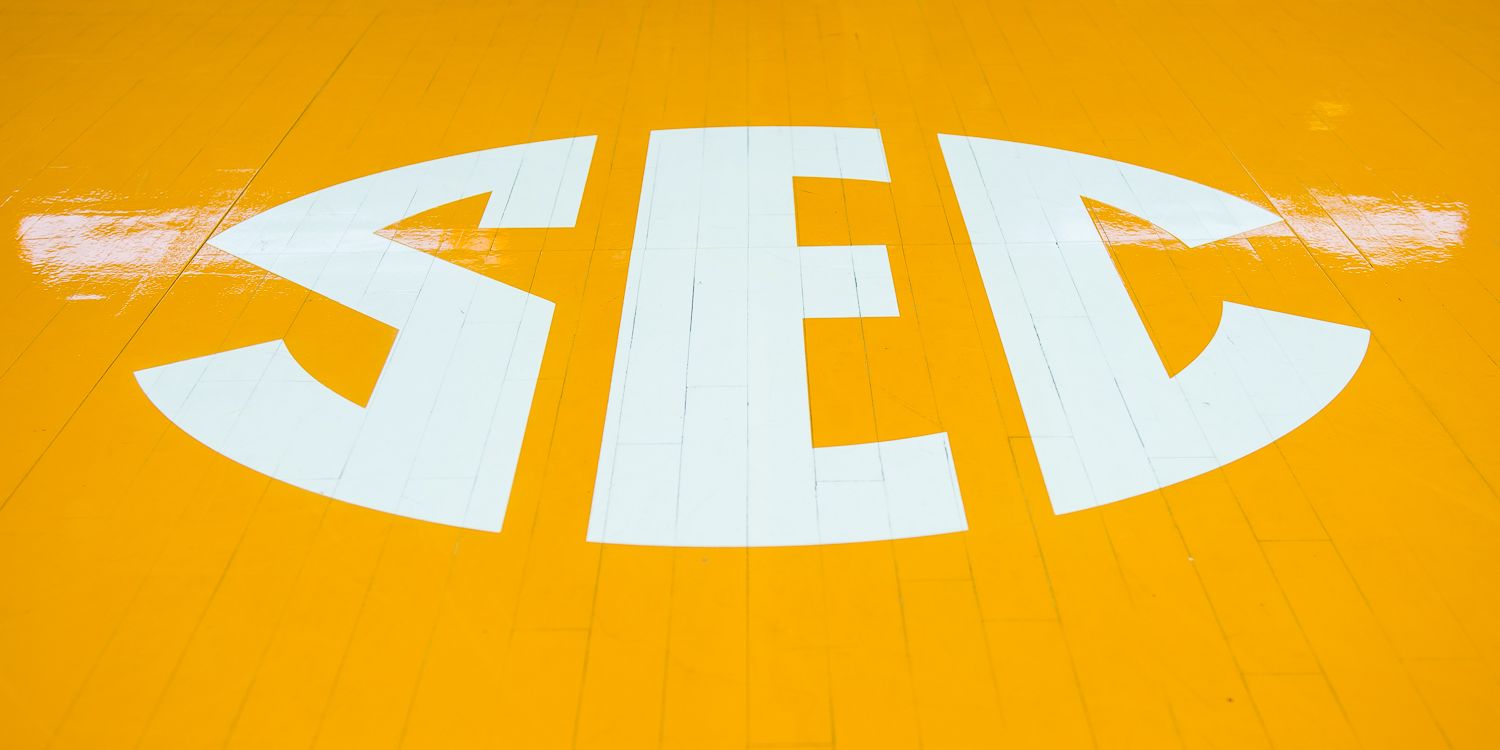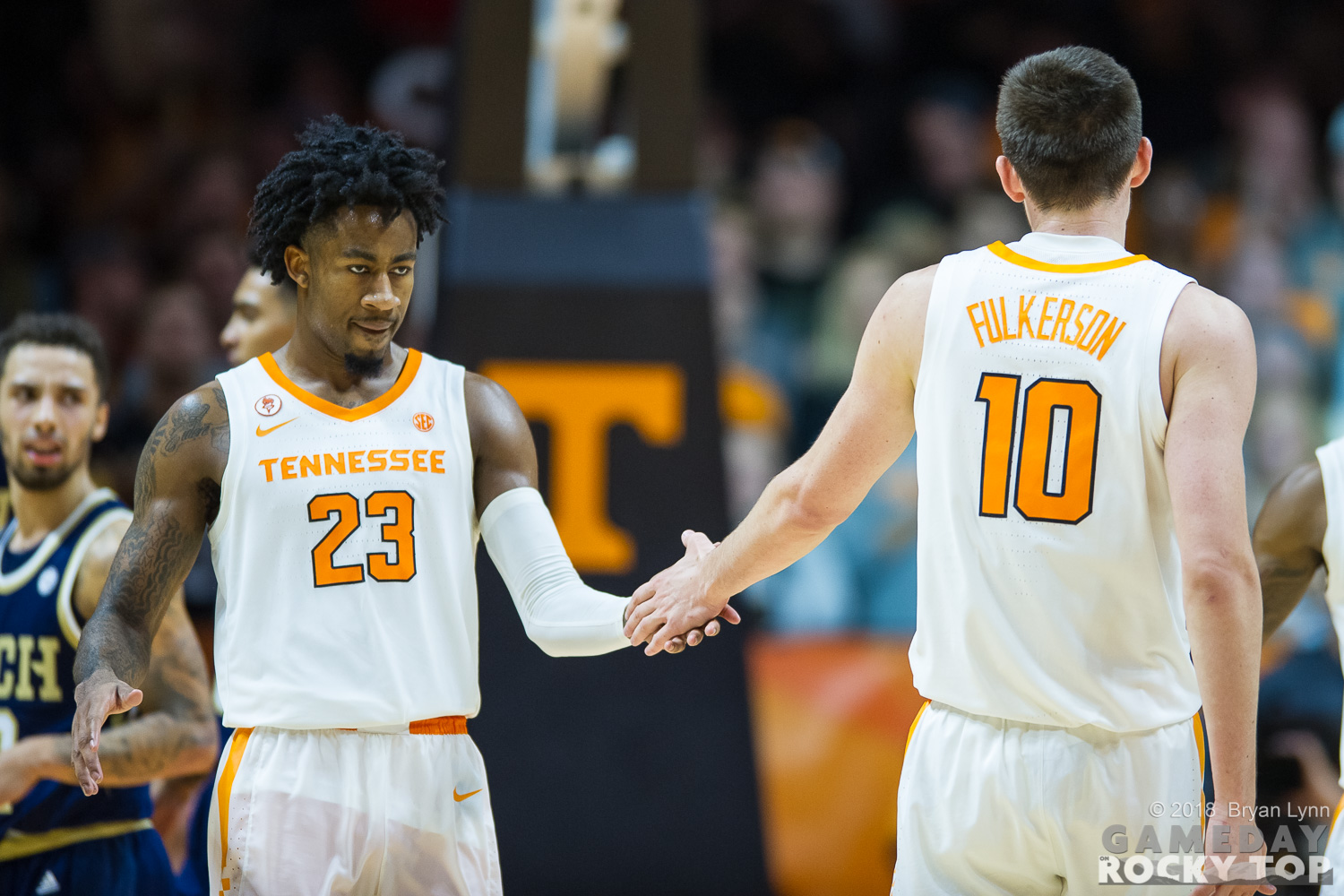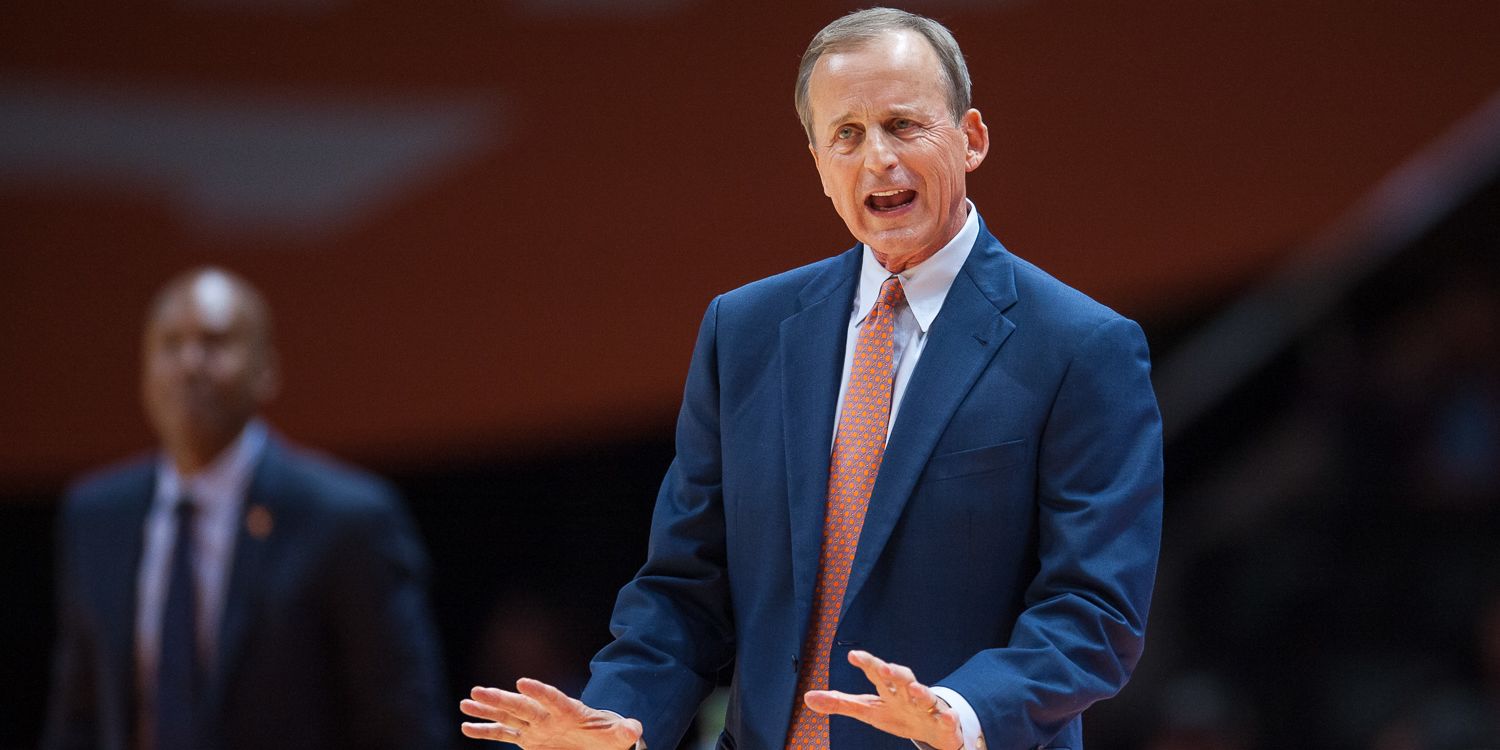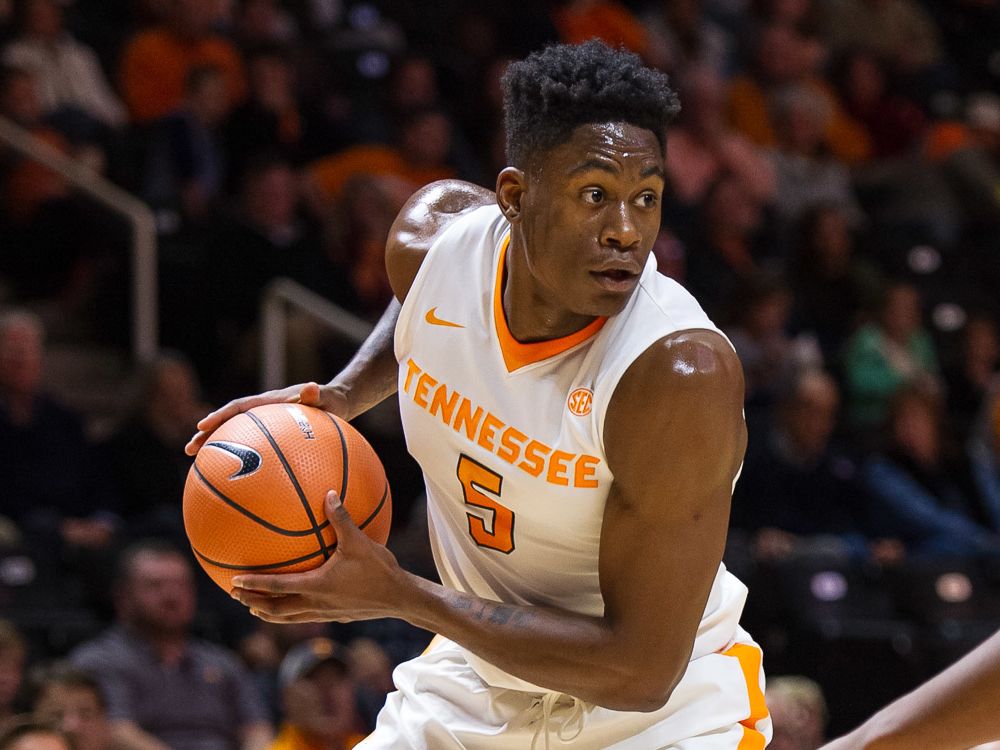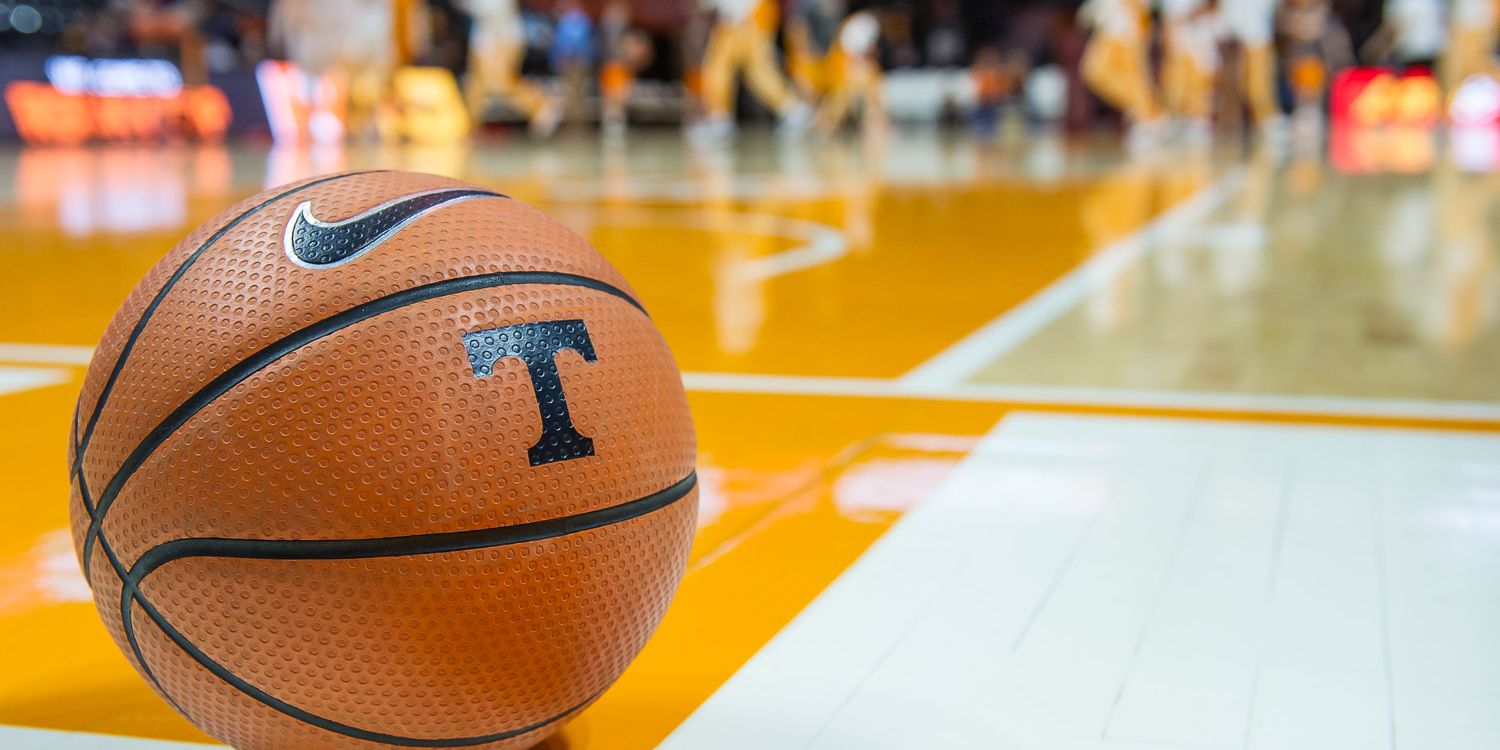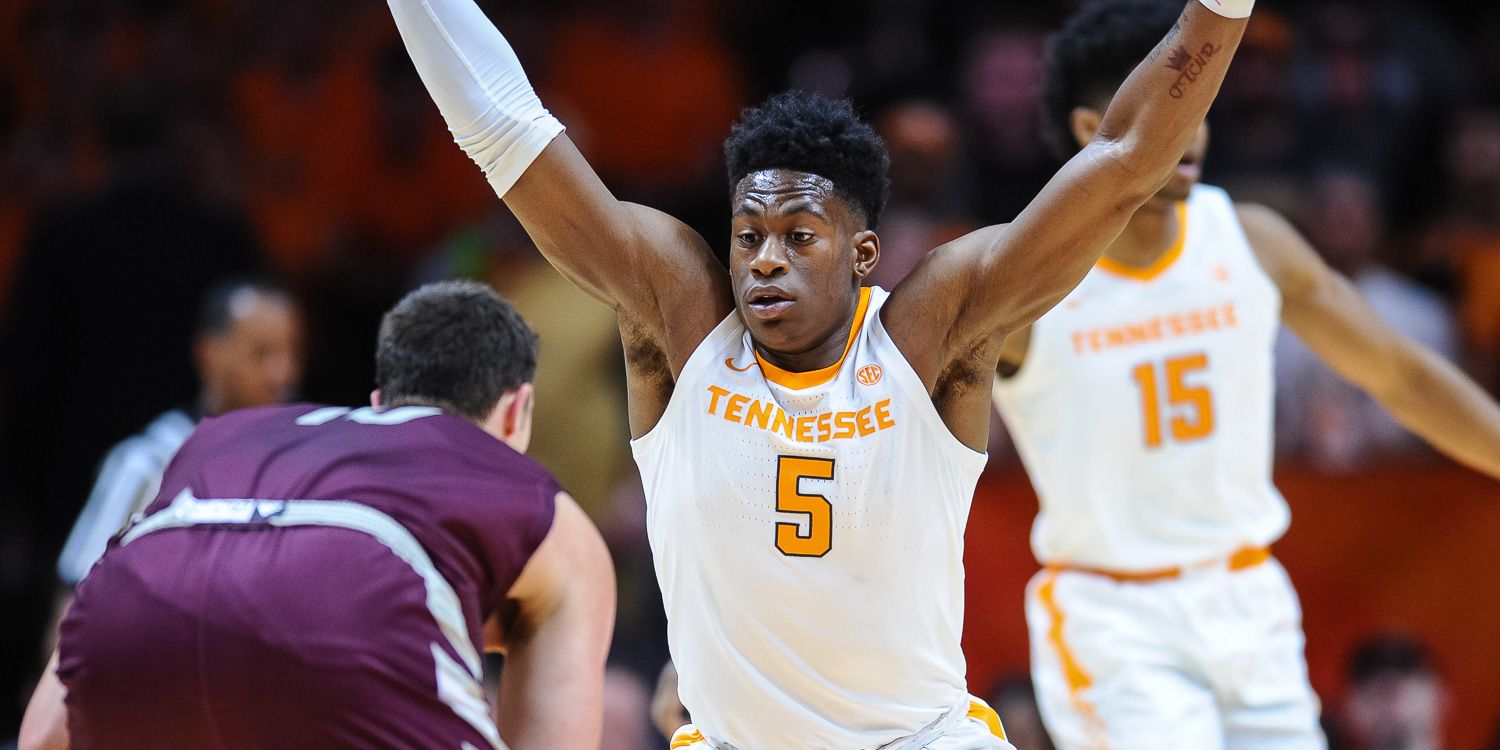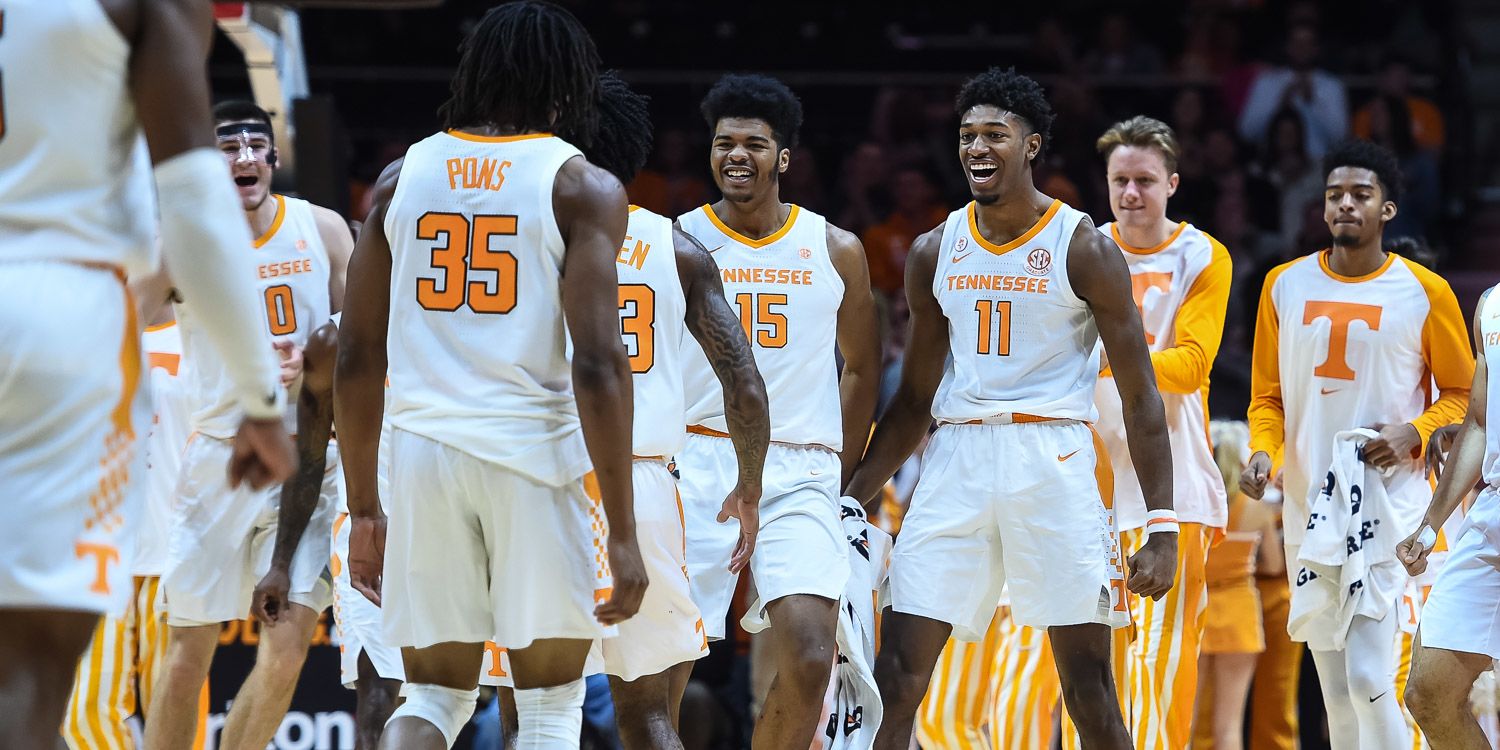With apologies to our friends from Cookeville, I’m not sure how much is left to learn about the Vols entering conference play. Tomorrow, Tennessee hosts Tennessee Tech: 330th in KenPom, where the Vols are projected to win by 30. From there, we begin at last season’s end: Georgia comes to Knoxville next Saturday to open SEC play.
There’s plenty of consternation about the #3 Vols not being #2 this week, but the Vols already cleared the biggest hurdle to getting to #1 by beating Gonzaga. The rigors of conference play offer plenty of opportunities for Duke, Michigan, and Virginia to stumble, which would not have been the case for the Zags.
Tennessee’s rigors are extraordinarily back-ended this season. Right now there are six SEC teams in the KenPom Top 50, led by the Vols at #11. Tennessee plays Florida (KenPom #27) on January 12 and February 9. Every other match-up with the top of the SEC is in the last seven games:
- 2/16 at Kentucky (KenPom #15)
- 2/19 vs Vanderbilt (#62)
- 2/23 at LSU (#41)
- 2/27 at Ole Miss (#54)
- 3/02 vs Kentucky (#15)
- 3/05 vs Mississippi State (#23)
- 3/09 at Auburn (#13)
If form holds, a significant chunk of the argument for or against Tennessee will be made down the stretch. Before then, and before the grind of league play begins, here are two ways the Vols can improve:
Create Turnovers
Last year defense was Tennessee’s calling card: sixth in KenPom defensive efficiency and 14th in effective FG% allowed. The offense was good – 36th in KenPom – but the Vols were winning with defense.
This year, the script has flipped: Tennessee is eighth nationally in offense, a number I’m not sure many of us thought the Vols could get to. Meanwhile the defense is good – 31st in KenPom – but hasn’t been Tennessee’s ace card.
Some of the numbers are down, but not alarmingly so: the Vols are still 38th in effective FG% allowed, 63rd in three-point percentage allowed, and continue to excel at shot blocking (38th). The biggest difference so far this year? Last year Tennessee created a turnover on 20.4% of opponent possessions, 53rd nationally. This year? Just 17.9% of opponent possessions, 238th nationally.
The Vols averaged 14.9 turnovers forced in the first seven games, including 16 from Kansas. But in the last four games, the Vols forced only 40 turnovers, including a possession-heavy affair with Memphis.
This leads us to…
Lamonte Turner gets healthy (or the Vols grow playing small ball without him)
I’m still not exactly sure what this means:
Turner, last season’s SEC Sixth Man of the Year, is definitely a component of Tennessee’s best basketball. He’s best known for the big-shot quality that helped the Vols beat Purdue and Kentucky last season; Tennessee clearly has that in Admiral Schofield and the reigning SEC Player of the Year Grant Williams, but Turner provided it in Tennessee’s back court.
But something we may have underestimated about not only Turner, but the graduation of James Daniel: Tennessee can’t pressure opposing guards with the same efficiency right now.
Some of it is just math: the Vols are playing a glorified seven-man rotation right now, getting 32+ minutes from Bone, Schofield, and Williams. Bone only played 23 minutes last year, Schofield and Williams 28. Throw in recurring issues with foul trouble, and your defense has to be a little more tentative (and the offense has been good enough to make up the difference).
But without Turner, the Vols are leaning heavily on Bone and Jordan Bowden in the traditional guard role. Yves Pons is clearly a disruptor, but trails only John Fulkerson in fouls per 40 minutes. The longer Turner is out, the more important Jalen Johnson becomes. He didn’t play at all in Brooklyn when Turner briefly returned, but since then he’s averaged nine minutes per game.
Remember, Tennessee’s most frequent lineup at the end of last season put Bone, Bowden, and Turner on the floor together with Schofield and Williams. We’re all glad to see Kyle Alexander carrying a heavier load this year, but the Vols really haven’t put anything resembling that three-guard small-ball lineup on the floor (Bone, Bowden, Johnson plus two forwards and no Alexander).
Again: Tennessee is ranked third, beat Gonzaga and went to overtime with Kansas on neutral floors. We’re plenty capable. But there’s still room to grow on the defensive end, with or without Lamonte Turner’s return.

